How Difficult Is It to Design and Custom Manufacture a Folding Knife?
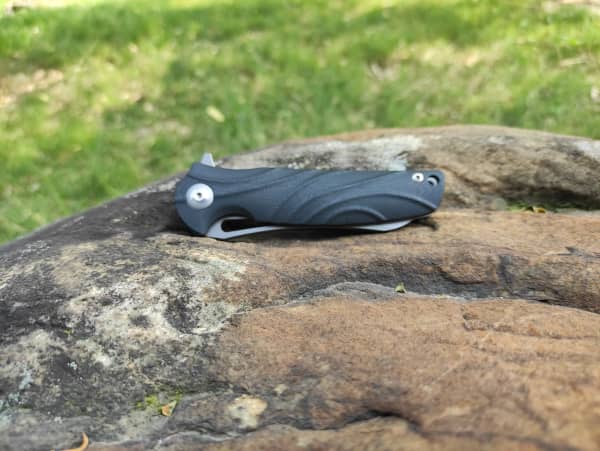
The knife manufacturing process as it is is not easy. Every knife manufacturer has to come up with their own unique twists that make their product stand out and reliable. When customization comes into play, things become even more complicated.
We will explore the difficulty of knife customization from scratch, how folding knives are custom produced, the factors to consider when choosing the materials for this process, and other important information. If you have always been curious to know what happens behind the scenes in custom knife manufacturing, then you are in the right place.
Why Is It Hard to Design and Custom Manufacture a Folding Knife?
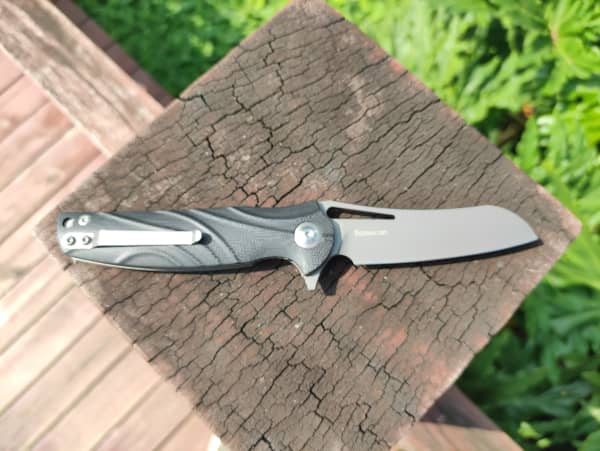
Unlike regular knives that can be mass-produced using the same methods that can even be automated to increase speed, custom knives are not the same. A knife manufacturer may get different orders for different knives, which means they have to develop different manufacturing processes for each knife.
The reasons why it is so hard to design and custom manufacture a folding knife include the following:
- Skill Intensive: A custom pocket knife cannot be made by just about anyone, neither can the process be automated. What makes them unique is the fact that they are handcrafted in a way that they cannot be replicated even when redone by the same hands. This takes skill, and not many people can pull it off. This is why custom-made knives are not that common. It takes time and a lot of skill to just get one ready.
- Expensive: Unlike regular knives that use well-known blueprints, a custom knife has to be made from scratch based on new blueprints that have never been seen before. This requires a creative mind and a lot of high-quality material since there will be a lot of trial and error until the right design is found. This costs a lot of money and will eat into the pocket knife manufacturer’s For this reason, most knife brands usually have a separate department dedicated to coming up with custom folding knife designs on the spot when the order from the client arrives.
- Unavailable Materials: The reason why people go for custom made knives is the higher quality of materials used to make them; most are made using regular steel, they have blades crafted out of expensive things like carbon fiber or titanium; these are not the kind of materials you will find in your local store. Orders have to be made in advance from specific sources before any manufacturing commences. This can make the whole process take a long time.
- Laws and Regulations: There are certain blade lengths that automatically qualify a knife as a weapon, making it illegal once surpassed. Custom knives are made on request, and this means the client is paying top dollar to have exactly what they want, and most times, this comes in the form of blade lengths that are beyond legal. This means the manufacturer may have to get permission from the relevant authorities before starting the manufacturing process; this may cost money and take a lot of time.
- Unreasonable Requests: Like in any manufacturing process that takes custom requests from their clients, things can be very hard for the manufacturer when the client starts making unreasonable requests. It now becomes a task for the manufacturer to explain in detail while some things cannot be pulled off. This can stall the manufacturing process for quite a while.
How Is a Pocket Folding Knife Custom Produced?
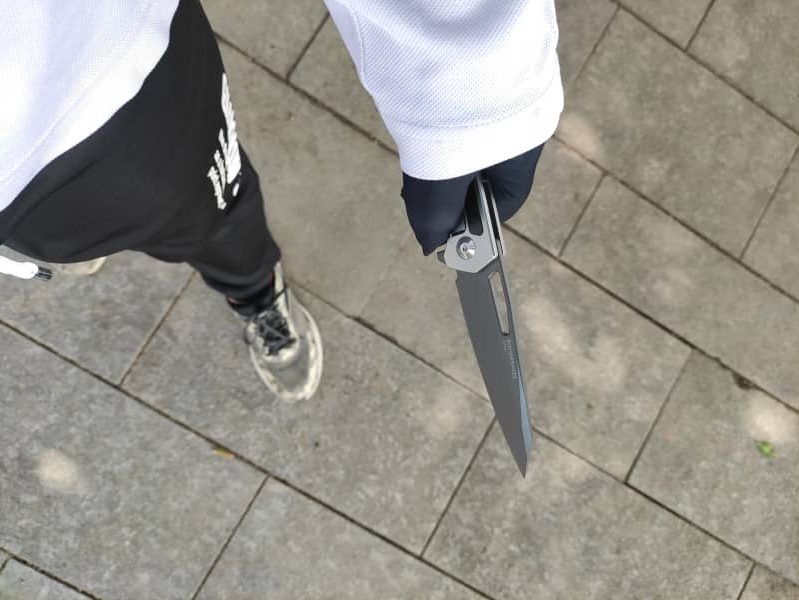
A custom pocket folding knife follows the same manufacturing process, with some little deviations depending on the request from the client. The following are the main steps it takes to make a customized folding knife.
- The Draw Up: This is the most important part of the process since it is the blueprint upon which the knife will be designed. The final product will reflect the sketch drawn in this stage since everything is modeled on this. In this stage, the knife is drawn on paper and transferred to a clear plastic that can be cut out cleanly to provide the shape upon which the knife will be fashioned around.
- Drilling: Once the design cutout has been made on the piece of metal that will form the blade, holes are drilled in appropriate places to create anchorage for the handle later on. For the knife to be stable, the blaze has to extend all the way into the handle to give the user a private when applying force during handling. The holes are made using a drilling machine, and the sizes vary depending on the specifications on the blueprint.
- Insertion of Pivots: Once the blade part has been secured in place, the pivots have to be inserted in the holes that have just been drilled in the last step. These pivots, pins, and washers are designed to fit the dimensions set out of the knife in order to limit any movement of the blade once the knife is complete later on.
- The Lock and Detent: The lock is one of the most important parts of outdoor knives, and for a customized knife, it has to be done right, or the whole design will fall apart. The groove that will provide the space for the lock to slide in is made on the blade in the prices area where the knife meets the handle. This will allow for the blade to fold into the handle without using up too much space for movement.
- Fixing the Handle: The blade is now fixed into the handle, and more screws are added for the handle to be permanently combined with the other end of the blade. This is one of the easiest processes, as all that’s needed is the addition of screws to ensure there’s no movement.
- Sanding and Polishing: Once the blade has been locked in place, the next part is sanding and polishing to get rid of the impurities and give it that signature shiny look. This is the part where the initial sharpening takes place, and the rest of the blade is put through a rigorous sanding and polishing process for that final look.
- Addition of Art: A custom knife is never complete until unique patterns and artworks are added to the knife. This can range from inscribing the logo on the blade itself or adding varying patterns on the handle itself. All these additions are at the discretion of the client, and they may take time due to their unique nature. The end product is always a sight to behold.
How to Choose the Blade Material of a Folding Knife
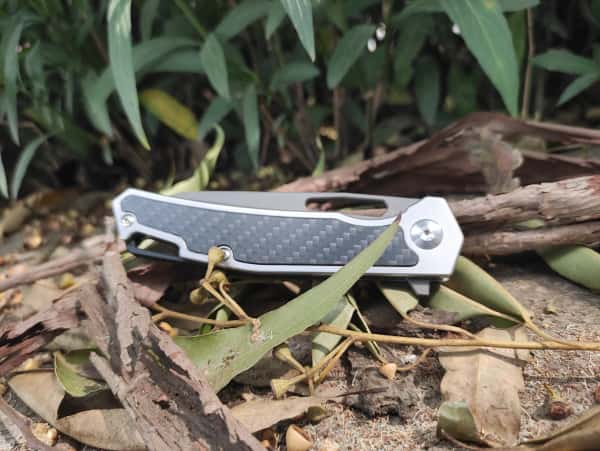
The blade material can make or break a folding knife. The nature of the material will determine the longevity, the type of tasks the knife will be used for, among other things. So how do you choose the right material for your blade when making your custom folding knife?
The Price
High-quality materials will always cost a lot more than inferior ones. Common blade materials used to make folding knives include steel and aluminum. They are the most commonly available, and getting your hands on them is not that hard. However, blade materials like titanium and carbon fiber cost more as they are stronger but harder to find.
Longevity
How long do you want the knife to serve your needs? If you want a custom folding knife that will last you ages, then go for a more robust blade material like titanium or stainless steel. Aluminum is the weakest of them all, and that may only last you a couple of months before you are forced to find a replacement.
Availability of Spare Parts
There’s no controlling how a knife will turn out down the road because accidents do happen. You need to go for blade material that is easy to replace in the event that the knife is damaged or dented beyond help. Having a knife that requires the blade to be imported would not be good for anyone who uses their folding knives regularly.
Flexibility
Can the blade accommodate all the customization needs that you want? Some blade materials like titanium may be too tough for any kind of inscription to be added unless you use highly advanced technology, and this translates to more money. Think of how much you are willing to spend before making the final decision on the blade material you want to go with.
How Do You Choose the Shape of the Blade of a Folding Knife?
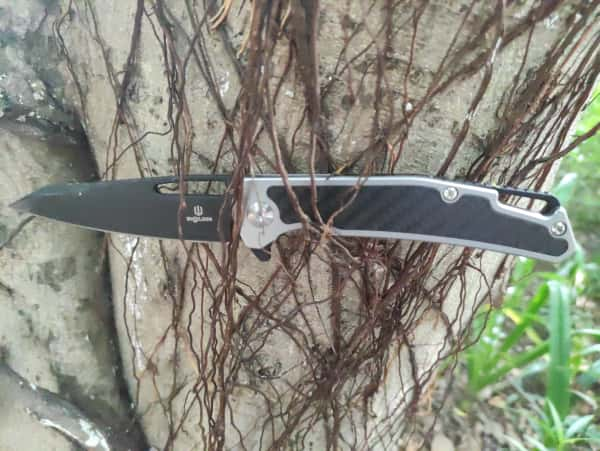
The shape of the blade on your customized folding knife depends on a lot of factors. Looking at the list of blade shapes that exist for folding knives, you will be amazed at the choices at your disposal, but this is not an accident; there’s a good reason behind every shape. To choose the right one, think of the following factors.
- Purpose: Why are you getting a folding knife? What’s the task you need the knife for? These are some of the questions you need to ask yourself before buying a folding knife. Some blades are designed for defensive needs, some are for simple cutting toles, and some can handle heavier tasks like digging for shaping wood into tools.
- Size: Bigger blades translate to more functionality which is a good thing to have around you. However, the knife will become bulkier, and you are most likely to run into trouble with law enforcement in most places. A smaller blade is easier to hide and can be handled easily as they are lightweight.
- Balance: A good knife has balance, and you can feel it the moment you hold it in your hands. A folding knife is more than just a tool to an end; it has to be designed with all the considerations covered in detail. This is how you get a knife that works exactly as it is designed.
How to Choose the Handle Material and Handle Shape of the Folding Knife?
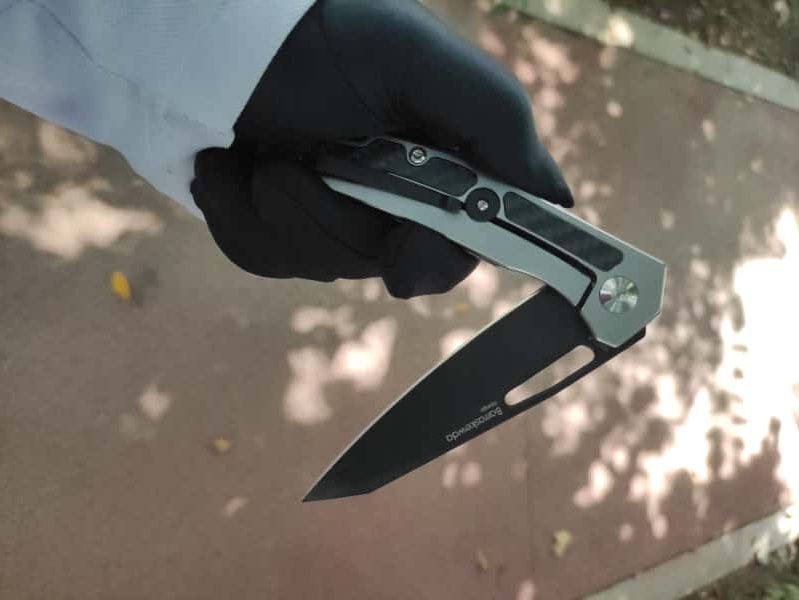
The nature and shape of the material used to make the handle on a folding knife are just as essential as any other part. This is where your hand applies the pivoting and force needed to get things working. The following are the factors you have to pay attention to when choosing the handle material.
- Material Type: Unlike blades, handles have more options, and each of them brings certain benefits and drawbacks depending on the purpose of the knife involved. The most common would be plastic as it is easy to make whole. The most expensive would be carbon fiber and titanium.
- Cost: There’s no need to break the bank just to get a good handle on your folding knife. However, if you have the funds to spare, you can go for an ivory handle or one made using special bones with intricate tribal patterns inscribed on them.
- Grip: Using metallic handles can be counter-productive, especially in areas that experience cold weather. Metal is a good conductor of heat, and this means when used in frozen exteriors, they become too cold and slippery. Go for something like wood or plastic that is impervious to changes. Rubber handles would be the best fit for you.
Conclusion

Customizing a folding knife may be the best thing you can do as a knife owner, but it will come at a cost. Every knife distributor brand in the world offers customization services for their clients as they understand the needs of knife owners to stand apart from the crowd with their unique knives. To understand more about folding knives and all the customization techniques used, check out our website (Shieldon - knife manufacturer) and have all your questions answered by our team of experts.
Shieldon Knife is a professional custom pocket knife manufacturer that owns a factory and designers. Check out our blogs for tips and tricks around outdoor knives and multi-tools! Or contact us if you need help with sourcing hinges.
You can also follow us through the following ways:
https://www.facebook.com/ShieldonCutlery
https://www.instagram.com/shieldon_knives_and_tools/
https://www.youtube.com/channel/UC_Dz--HODWHFY4AaUF0z11Q
https://twitter.com/Shieldonknives1/
https://shieldonknivesandtools.tumblr.com/
https://www.linkedin.com/company/72285346/
https://www.pinterest.com/shieldonknivesandtools/
More video introductions:
https://www.youtube.com/watch?v=N0wLgMYEVak
https://www.youtube.com/watch?v=506F-XXX6v4
Article source: How Difficult Is It to Design and Custom Manufacture a Folding Knife? - Shieldon

